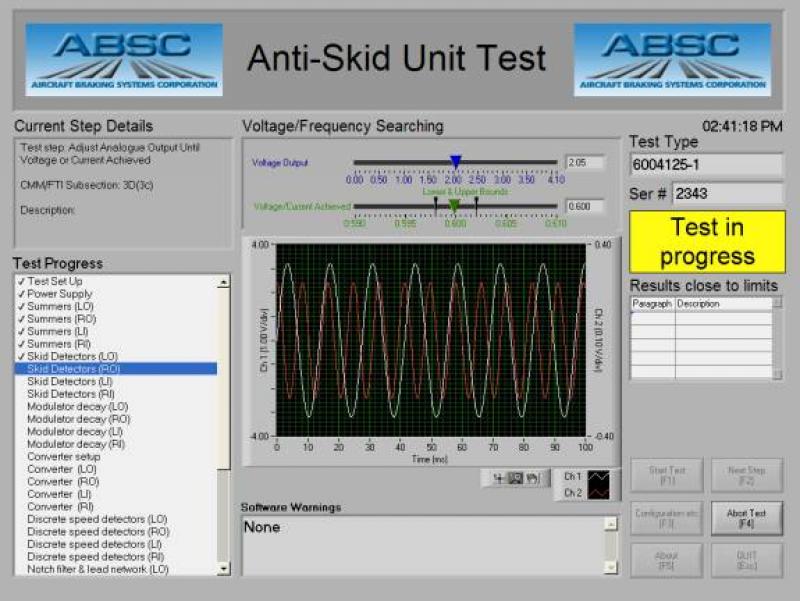
Working with National Instruments we helped to deliver an automated test system for Aircraft Braking Systems.
Aircraft Braking System Europe Ltd manufacture an anti-skid system which is a much more sophisticated equivalent of the ABS system found on cars. These systems are extremely rugged, capable of withstanding extremes of temperature and very reliable long-term.
To ensure this reliability, extensive electrical tests need to be performed, both of the individual boards and of the whole system when fully assembled. Until recently, these tests were performed with a manual test set. Electrical connections were made by hand along with the operation of numerous switches and potentiometers. Values read from meters or from an oscilloscope were recorded by hand on a results sheet. The whole process would take an experienced engineer around 4 hours to perform, depending on the test.
Aircraft Braking Systems contacted National Instruments about supplying an automated test system, and National Instruments recommended a LabVIEW developer from LiveWires for the associated LabVIEW programming and systems integration work.
Working with National Instruments, we suggested a PXI system (see photograph) for the basis of the test system. This included a PXI-8176 1.26GHz Pentium III embedded controller, PXI-5102 scope card, PXI-5401 function generator, PXI-4060 DMM, PXI-6704 analogue output card and PXI-6508 96-channel digital card. The PXI system is housed in a 19″ rack along with a keyboard and mouse, CD-ROM drive and power supply for the anti-skid system under test.

The unit under test is inserted in a “pocket” on one side of the test system. After entry of a serial number and other test details in the “start screen” of the LabVIEW program, the test begins. The program reads the details of the individual test steps, typically 900 in number, from an Excel file. (This file is structured in such a way that it is easy for Aircraft Braking Systems personnel to set up or modify the many steps of each test.) The program then steps through the test, recording results in another Excel file and storing scope trace images for viewing by the operator at the end of the test.
The whole test takes just over 30 minutes to perform – an improvement of about sevenfold over the manual test set. In addition, only a few steps require operator intervention, so the operator can leave the system to work through the steps for most of the test.
The system is currently being used to test Fokker-50 anti-skid units, and the software will soon be modified to enable the system to test Fokker-100 units.
The adoption of a LabVIEW based ATE has significantly reduced turn-around-time and manpower overhead.Without the assistance and guidance from Automation Interfaces [LiveWires], we would not have been able to create a working system in the timescales necessary to meet the demands of the Airworthiness Authorities.